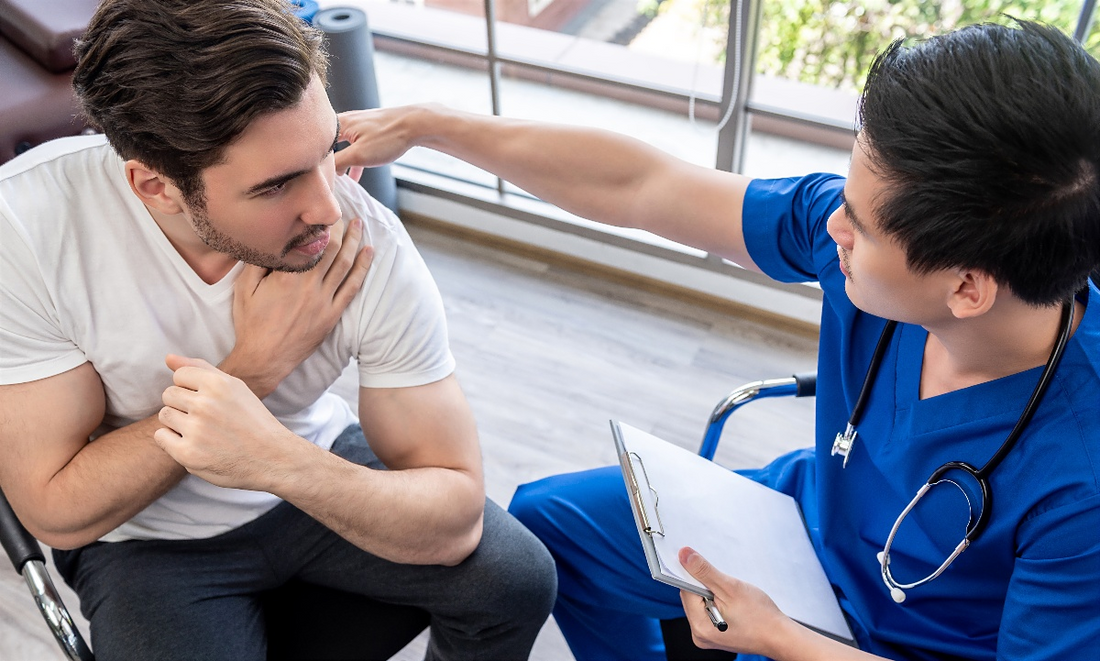
How can a shoulder brace help an athlete?
Share
The shoulders are the most movable joints in your body, allowing you to do everything from swinging a golf club to swimming the butterfly.
Unfortunately, this incredible range of motion comes with its own risks. The shoulder is a common site of injury in athletes, especially in activities that require repetitive use of the joint, such as basketball, volleyball, swimming, and weightlifting.
Since shoulder problems can develop over time, some athletes get used to the pain and "pass" it. This will only make the condition worse and lead to even more problems, including back and neck pain.
How can you protect a sore shoulder while doing your favorite activity? Shoulder straps may be the answer. This is a non-surgical method of stabilizing and protecting joints during sports and other activities.

What are support straps?
What you need to know about wearing a shoulder brace
This wearable device has a unique material that works to compress your muscle tissue to prevent swelling during the healing process.
In our clinic, we strongly recommend the use of a supportive shoulder brace for ultimate recovery. Our braces are tailored to your condition by our experienced medical specialists. Making sure your shoulder is properly braced will not only promote full recovery, but also allow your shoulder to relax and heal properly.
A shoulder brace can also be used daily if you have chronic pain due to a pre-existing medical condition. These braces relieve discomfort, prevent swelling, and provide support.
What are the most common shoulder injuries in sports?
The shoulder is made up of two main joints: the glenohumeral joint, where the arm bone and the shoulder blade join; and the acromioclavicular joint (AC), where the clavicle joins part of the shoulder blade.
Most injuries do not involve the shoulder bone, but rather muscles, tendons, and ligaments. Common shoulder injuries in sports include:
Rotator cuff injury
The rotator cuff is a small part of the muscles and tendons that stabilize the shoulder. This is the most common site of shoulder injuries in sports, and muscle or tendon tears often affect swimmers, baseball players, and tennis players. Symptoms include a dull pain deep in the shoulder and weakness in the arm.
Shoulder dislocation
This happens when the top of your arm bone pops out of your shoulder socket (in the glenohumeral joint). A severely dislocated shoulder can cause tissue and nerve damage around the shoulder. Symptoms include severe pain and a clearly unfit or deformed shoulder.
AC joint injury
The most common of these is shoulder separation, during which the ligaments connecting the clavicle and shoulder blade are stretched or even ruptured, usually as a result of a blow or a fall. Symptoms include shoulder pain, weakness, bruising or swelling.
Bursitis
Shoulder bursitis occurs when inflammation develops between the tip of the shoulder and the top of the arm bone, caused by irritation of the bursa (small fluid-filled sac that reduces friction between bones, tendons, joints, and muscles). Shoulder pain and severe loss of motion are common symptoms.
Any athlete recovering from an injury -- or desperately trying to avoid it -- understands the risks of training or playing.
While many doctors recommend rest and ice as a first treatment for shoulder pain, it's not a long-term treatment for active people. In addition to losing training time, you can also become stiff from prolonged immobilization.
Shoulder braces can be worn to recover from shoulder injuries or to reduce discomfort. They range from ultra-durable slings that greatly limit your range of motion to lightweight neoprene vests that protect your AC joints.
As technology has advanced over the years, most shoulder rest materials are lightweight and breathable, and the shoulder straps are easily adjustable.
Shoulder straps can help:
-
Speed up the recovery process
- Protect your shoulder from further injury
- Provides pressure, which strengthens receptors in the skin and helps the brain better understand the position of the shoulders
Shoulder braces can help you at various stages of the recovery process.
After an injury, the shoulder straps can be used to support and protect your shoulder during the healing process. Some braces compress swollen joints and help relieve inflammation. A brace gives your injured muscle a break, virtually eliminating the potential for overuse.
As rehab progresses, shoulder braces can be used to increase "proprioception" -- your sense of your body's position. (Quick proprioceptive test: close your eyes, can you successfully touch your nose?)
People with a complete or partial dislocation of the shoulder have decreased proprioception, and studies have shown that a shoulder brace can improve this condition.
Some shoulder braces can help you maintain overall posture and protect your shoulder joints as you start your training slowly.










